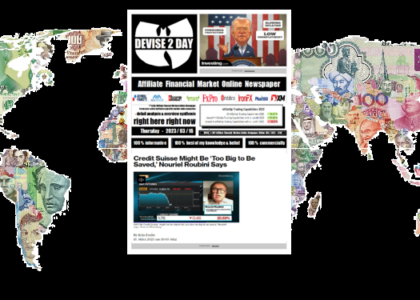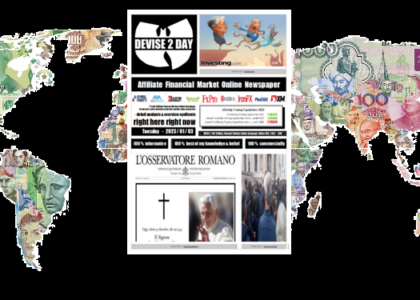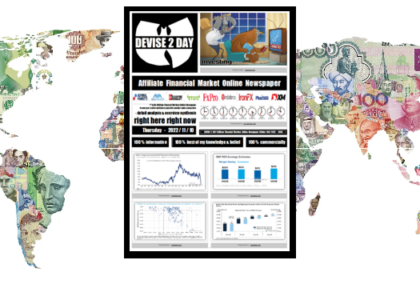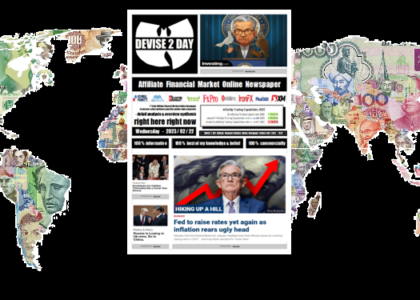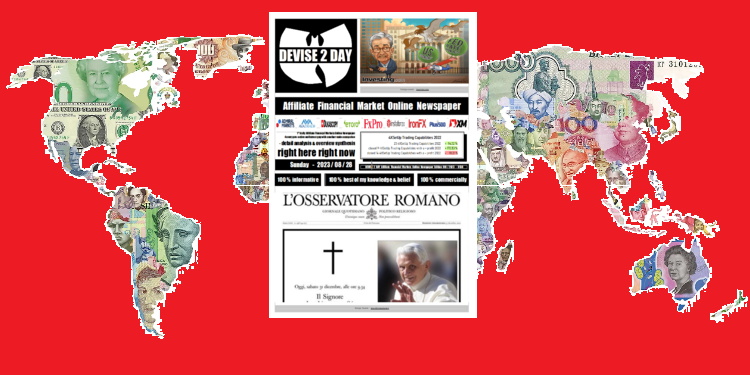
2023/01/01 (138.001) Technical Analysis – XETR-QIA & CBOT_MINI-YM1!
We Basically Remain Long In The Dow Future This Year 2023
– And That Too With The Risk That We May Fall Below 30.000 Points Again
US WallStreet Slightly Down – Weakest Year Since 2008
The leading index Dow Jones Industrial ultimately lost 0.22 percent to 33,147.25 points. The market-wide S&P 500 fell by 0.25 percent to 3839.50 points. At the end of the day, the tech-heavy Nasdaq 100 was down just 0.10 percent to 10,939.76 points. All three indices posted high losses in December, with the Nasdaq 100 alone slipping a good nine percent. In New York, the stock market closed somewhat weaker on the last trading day of a disappointing stock market year. As if investors still wanted to see positive signs on Friday, the indices almost made up for their significant losses at the end of trading.
The annual balance is even bleaker:
2022 was the weakest stock market year since the financial and economic crisis of 2008.
The Dow fell by 8.8 percent. The S&P 500 lost 19.4 percent. The Nasdaq 100 surpasses this with a minus of a third. Market observers are therefore talking about a “stock market year to forget”, investors should now “just check it off” and look to the future. The United States is less affected by the Russian attack on Ukraine and the subsequent rise in energy prices than Europe, where stock prices also fell in 2022. However, inflation also picked up speed in the USA this year and forced the central bank to take countermeasures with significant interest rate hikes. This particularly affected the Nasdaq stock exchange, since the numerous technology companies listed there are more dependent on loans to finance their growth than companies from traditional sectors and their investments are therefore becoming more expensive.
Shares in the electric car manufacturer Tesla gained 1.1 percent at the close after recovering somewhat from their previous seven-day losing streak on Wednesday and Thursday. With a discount of 65 percent for 2022, they are among the biggest losers of the year on the Nasdaq 100. Significantly, two tech stocks were the biggest losers in the Dow in 2022, chip manufacturer Intel and cloud software specialist Salesforce, with losses of around 49 and almost 48 percent, respectively. On the last trading day of the year, Intel was the best value with a plus of 0.8 percent thanks to a brilliant final spurt, Salesforce closed little changed. Chevron topped the Dow in 2022, up 53 percent. As an oil company, the company benefited from high energy prices. On Friday they gained 0.7 percent.Dollar Enjoys Robust 2022 While Wall Street Heads For Worst Year Since 2008
The dollar index enjoyed one of its strongest years ever, up over 8% year-to-date, as the Federal Reserve was the first central bank among developed economies to rein on stubbornly high inflation with an aggressive tightening. The US central bank hiked its federal-funds rate by a cumulative 4.25% this year, the most since 1980, bringing borrowing costs to the highest level in 15 years while pledging that rates would need to go even higher in 2023. This dollar’s strength was seen across the board, with some of the most pronounced buying activity against the yen, given the widened gap in interest rates. The DXY hit a yearly peak of 114.8 on September 28, a level not seen since May 2002, before bottoming below 104 in December as concerns mount that the US economy will be dragged into a recession next year with the Fed already slowing the pace of rate hikes.
The Dow lost over 300 points on Friday, and the S&P 500 and Nasdaq 100 were down 1% and 1.2%, respectively, with investors reassessing the outlook for growth and monetary policy after a dismal year that could mark Wall Street’s worst annual performance since 2008. Governments and central banks grappled with stubbornly high inflation arising from years of ultra-ease monetary policy and the fallout from Russia’s war in Ukraine. At the same time, it is now widely expected that the developed world is heading for a severe recession in 2023 amid an aggressive tightening from major central banks to rein in such price growth, ultimately leading to job losses and downward earnings revisions. For December, the Dow is currently down around 4.4%, the S&P 500 lost 6.4%, and the Nasdaq 100 dropped 10.2%. Regarding 2022, the Dow is down 8.9%, while the S&P 500 and Nasdaq 100 plunged 19.7% and 33.5%, respectively.
Continuing Claims Highest In 10 Months While US Crude Stocks Unexpectedly Rise And/Or US Natural Gas Storage Fall The Most Since January
Continuing jobless claims in the United States increased to 1710 thousand in the week ending December 17th from 1669 thousand in the previous week. It is the highest level since February of 2022, above market forecasts of 1686 thousand suggesting it has been more difficult for the unemployed to find new jobs.
Stocks of crude oil in the US went up by 0.718 million barrels in the week ended December 23rd, against market forecasts of a 1.52 million drop, the latest US Energy Information Administration report showed. Meanwhile, crude stocks at the Cushing, Oklahoma, delivery hub decreased by 0.195 million barrels. Gasoline stocks edged up 0.282 million barrels, versus expectations of a 2.05 million barrel fall.
US utilities pulled 213 billion cubic feet (bcf) of gas from storage during the week ended December 23rd, more than market expectations of a 201 bcf drop. It was the biggest draw in inventories since the end of January as a winter storm that swept across large parts of the country raised heating demand for the fuel. It compares with a withdrawal of 125 bcf during the same week a year ago and a five-year (2017-2021) average of 106 bcf.
Dollar Enjoys Robust 2022 While Wall Street Heads For Worst Year Since 2008
The dollar index enjoyed one of its strongest years ever, up over 8% year-to-date, as the Federal Reserve was the first central bank among developed economies to rein on stubbornly high inflation with an aggressive tightening. The US central bank hiked its federal-funds rate by a cumulative 4.25% this year, the most since 1980, bringing borrowing costs to the highest level in 15 years while pledging that rates would need to go even higher in 2023. This dollar’s strength was seen across the board, with some of the most pronounced buying activity against the yen, given the widened gap in interest rates.
The Dow lost over 300 points on Friday, and the S&P 500 and Nasdaq 100 were down 1% and 1.2%, respectively, with investors reassessing the outlook for growth and monetary policy after a dismal year that could mark Wall Street’s worst annual performance since 2008. Governments and central banks grappled with stubbornly high inflation arising from years of ultra-ease monetary policy and the fallout from Russia’s war in Ukraine. At the same time, it is now widely expected that the developed world is heading for a severe recession in 2023 amid an aggressive tightening from major central banks to rein in such price growth, ultimately leading to job losses and downward earnings revisions. For December, the Dow is currently down around 4.4%, the S&P 500 lost 6.4%, and the Nasdaq 100 dropped 10.2%. Regarding 2022, the Dow is down 8.9%, while the S&P 500 and Nasdaq 100 plunged 19.7% and 33.5%, respectively.
good morning, good day, and/or good night
at whatever time, wherever you are !
right here right now :















